It is not uncommon to see good people getting brow-beaten into accepting ugly architecture on the grounds that the alternative, an intervention which is complementary to its situation and unabashedly traditional, is dishonest pastiche. Modern architecture, in contrast, is honest and authentic. Traditional architecture is nostalgic Disney World, while modernist architecture is for the present and reflects the job it has to do.
But what does it mean for architecture to be “honest”? Generally the term is used to mean one of two things: (1) the building does not cover up its structure and pretend to be something it is not; or, (2) the design of the building is more coherent with the spirit of the modern age.
Regarding the first point, there is no such thing as a work of architecture, modernist or traditional, which does not cover up its structure. Looking back over our history as far as the eye can see, architecture has always and everywhere involved ordering, ornamenting, and decorating bare structure so as to communicate a message–from antiquity in Egypt, Greece, and Rome, through the middle ages in Europe, the Renaissance, until the present day. Even modernist architecture plays the game. The only difference here between modernist architecture and traditional architecture is that the symbols are different. Modernist architecture generally relies on industrial imagery. But it covers up the structure just the same. For example, Mies van der Rohe’s Seagram’s Building in New York is slathered with bronze I-beams which contribute nothing to the structure. Frank Gehry’s work also covers up the structure, and more exuberantly so. All pure decoration.
Now one might say that the industrial imagery is an accurate representation of what the building truly is about under the skin. The Seagram Building’s I-beams may be structurally unnecessary; however, they do tell us about the actual I-beams beneath which are doing the work of holding up the floors, walls, and roof. But is this what ornament is supposed to be about? The entire history of architecture would suggest otherwise. Architecture is not about what is under the skin but about what is beyond the skin, that is, about how the world is organized. Architecture is about making evident and extending the hierarchy and meaning of the cosmos. In pagan antiquity, for example, most important were the gods, hence they received the most magnificent buildings, the temples. Were the temples not honest since they did not speak about their structure under the skin? On the contrary! The buildings were honest in that they spoke about their purpose!
As for the second point, coherence with the spirit of the modern age, if this were true would it not follow that traditional architecture would not be so popular as it is today and with such a broad spectrum of the population? When it comes to choosing a place to live, most people opt for homes in a traditional style. The real estate values of traditional homes in traditional neighborhoods are generally higher as a result. Many design and decoration periodicals focus exclusively on traditional work–and not run-of-the-mill work, but work for the educated and powerful upper classes. And as for Disney World, its idealized Main Street is attractive to people as it makes evident to people how beautiful is their very own tradition. There is nothing fake about the tradition that it is tapping in to. Rather, Main Street’s success is testament to the general failure to live up to the standards of our tradition. We’re so starved for it that we’re willing to buy tickets to see it done well. Which architecture is more appropriate for our time: one that communicates with the vast majority of people, or one which is promoted by a small ideological class and which either bewilders or offends the rest?
The spectacular technological advances of the modern age have no direct relevance to the question. Man has benefited from technological advances ever since the invention of the first tool. And though architecture certainly makes use of these advances, often showing them off in high status buildings (e.g., the arch and dome at the Pantheon; ribbed vaulting in the Gothic cathedrals; electric lighting at the World’s Columbian Exhibition in 1893; etc.), they don’t take center stage. Rather, they are put to the service of architecture. They help to communicate the purpose of the building and the institution it houses. Man does not serve technology–technology serves man.
So now, which of the buildings depicted below is dishonest? This one, Oakland’s Cathedral of Christ the Light, which bears no resemblance to a church building? and which presents the Church as an institution which proposes no content with respect to religion, but which, by foregrounding its sophisticated curtain wall, appears primarily interested in technology?
Or this one, St. Vincent Ferrer in Manhattan, which hides a steel structure and the latest in HVAC and low-voltage lighting systems, yet whose order, scale, ornament, and decoration convey with delightful clarity the purposes of the Church and the Dominican order?
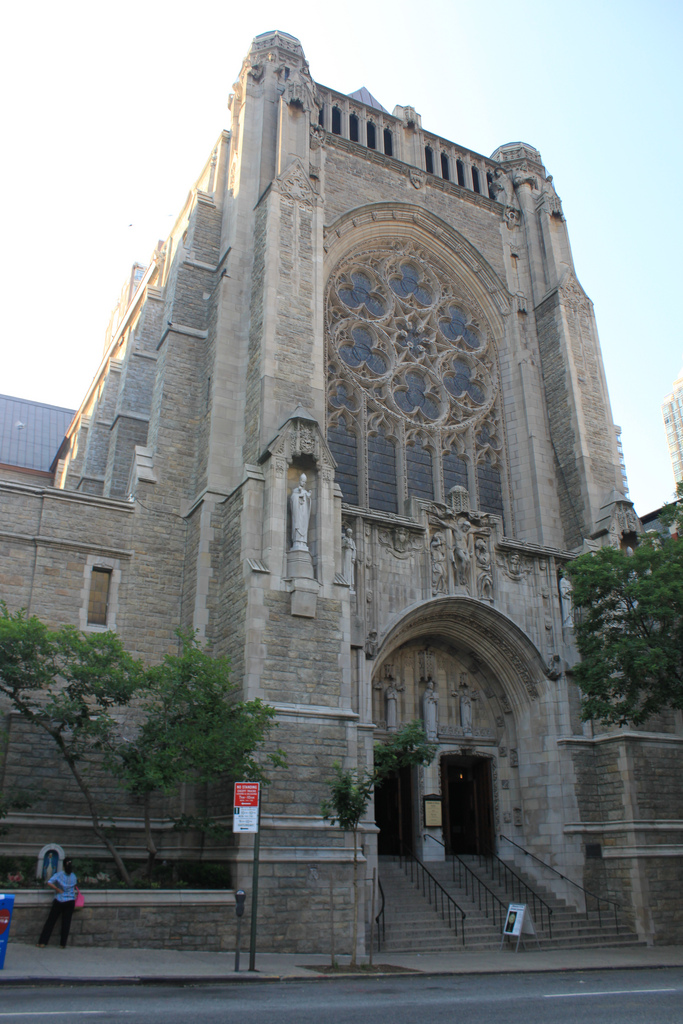
Church of St. Vincent Ferrer
(Image Source)
If architecture is understood as structure turned into poetry, beautiful and meaningful and suited to its purpose, then it is traditional architecture which is the honest architecture.
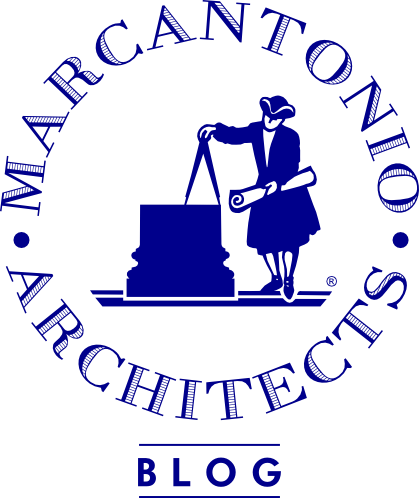
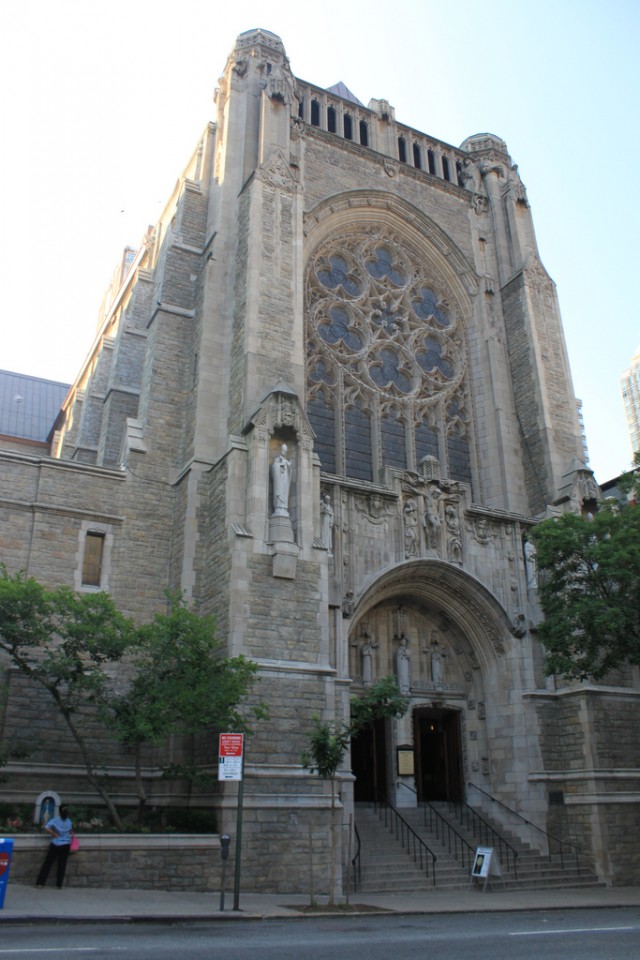
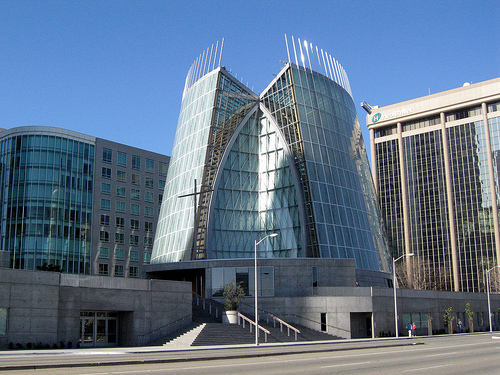
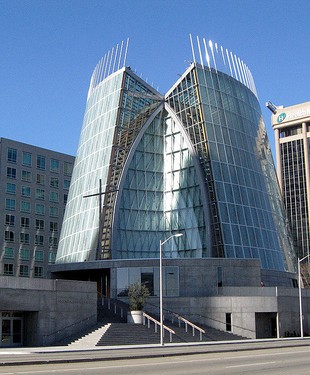
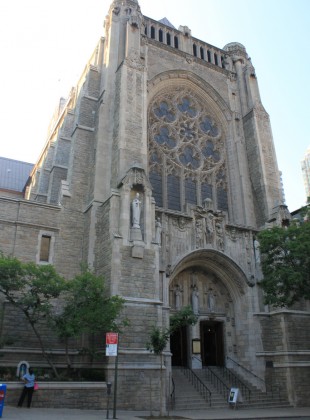
Firstly, do you even know what modern architecture is? Read up about the term and you’ll learn that the term “modernism (modern architecture) or international style has come to represent the mainstream of modern architecture from about the 1920’s to the end of the 1960’s more or less. Contemporary Architecture could be a more suitable term for architecture of today.Secondly. How was traditional architecture constructed? Architecture of its time has always been honest to its construction and use of material (of that time) up until the 1820’s. The age in architecture that started then was called the age of uncertainty, and it was called that for a reason.Sure it can be said that there is still an ongoing search for a style, but why must everything always be labelled. Why can’t a building be designed to suite its surroundings, function and climate?Taking a design that was intended for a site on the other side of the world is simply not done.South Africa has, in the last few years, taken on a Tuscan theme for its residential units. This inevitably resulted in a perversion of what was originally beautiful in its own setting.Would you build an Igloo in the middle of the dessert? Sure it’s beautiful but how long will it last?
First, there's a difference between modern architecture and modernist architecture. I consider what I produce to be modern architecture, that is to say, it is architecture being conceived in the present day. It's traditional, and it's modern–not a contradiction. The word "contemporary" is equivalent. Modernist architecture, on the other hand, is architecture which is based on Modernist principle: secular, agnostic/atheistic, materialist, and nihilist. Read Pope Pius X's great encyclical Pascendi Dominici Gregis if you want a truly thorough explanation of the ideas at the heart of Modernism. You will see that under the broad umbrella of Modernism are included post-modernism, deconstruction, parametricism, etc. etc. Second, so far as honesty of construction is concerned, your prejudices with respect to the nature of traditional architecture are muddled. Traditional architecture has always been quite "dishonest" in its construction and use of materials. Elements as simple as the pilaster and the door casing, for example, have existed since the dawn of architectural history and have absolutely nothing to do with construction or honesty to materials. Architecture tells a story that is much more interesting and profound than the pedestrian facts of of its material make-up. Third, climate does have an effect on the architecture of a place; however, it's not nearly so important as the culture of a place.
I believe we’re going to have to agree to disagree on whether form, function, culture or climate is more important. It is however evident that in times like these it is not the most suitable solution to just hide the real structure, to cover up what was necessary to include in the design to cool the building down (Like the HVAC system in the St. Vincent Ferrer), or to light up the building with artificial lighting because the design did not allow for sufficient natural lighting. All of this could have been avoided in both the examples you used above if the building was actually designed for its site, context and climate. Don’t you agree that it is merely lazy to copy a design created for a completely different setting.
The suggestion that if we just get the windows in the right place we won't need air conditioning or artificial lighting is a pipe dream. Air conditioning and electric lighting are good things. When I find myself in a beautiful old church on a sweltering hot day I remember that. Plus, a building's style is not a function of its climatic setting but of its cultural setting. You can hardly accuse Goodhue of laziness in that respect! At the height of the Roman Empire, the Romans built in their style everywhere from chilly northern Europe to sultry northern Africa.
A pipe dream? Why not just take out all the windows then if it has no function or influence on the design. It doesn’t just have to do with the placement of the windows. It is much more intricate than that!Have you sat in one of those churches you are referring to? Have you been to a Historical Church in Africa on a hot summer’s day? I assure you, you will change your opinion if you do. As for the Romans, they built in their style because they knew of no other way. They were too busy trying to conquer the world to rethink the relevance of alternate climates inflicted on their Architecture.